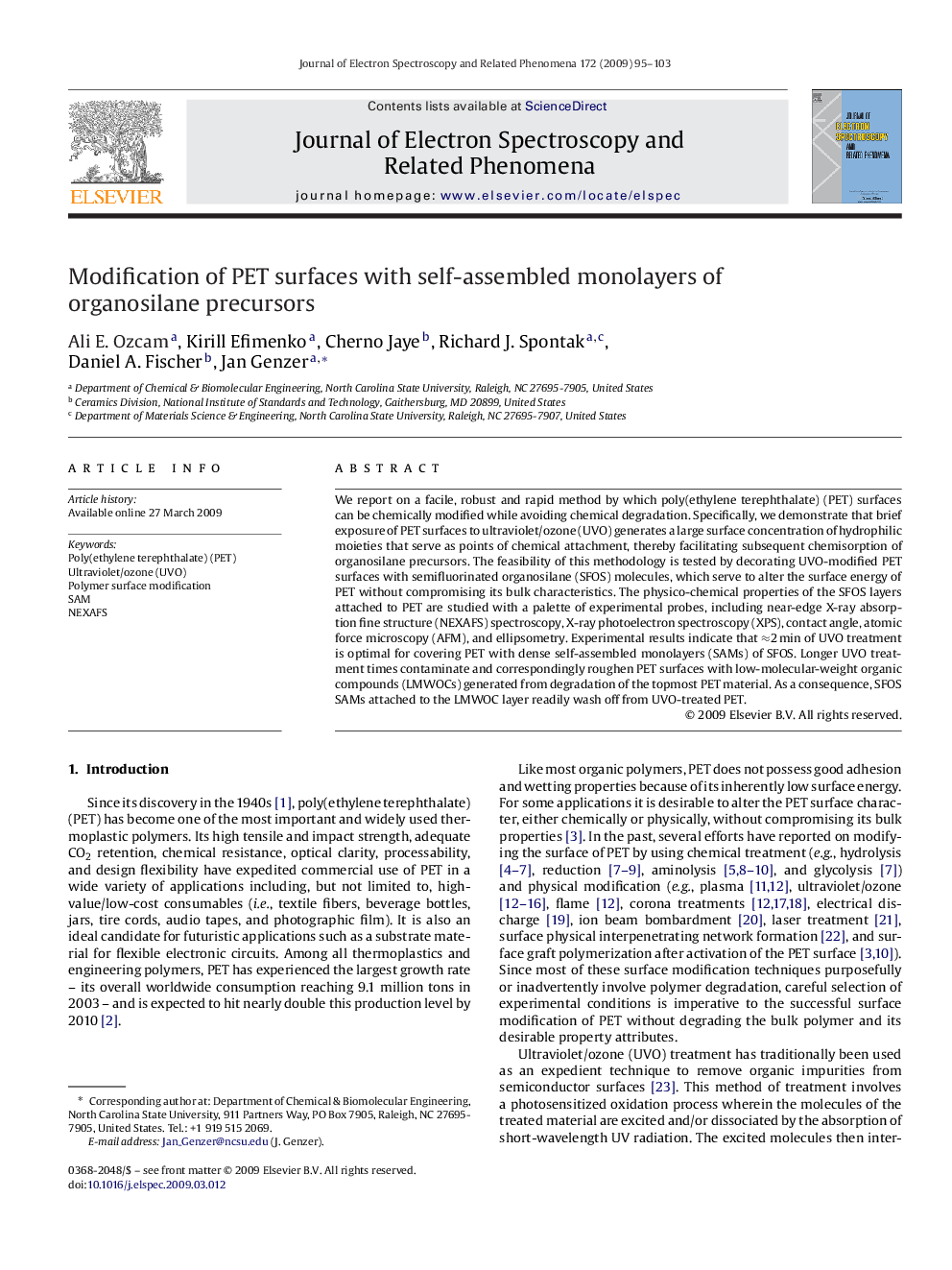| Article ID | Journal | Published Year | Pages | File Type |
|---|---|---|---|---|
| 5396748 | Journal of Electron Spectroscopy and Related Phenomena | 2009 | 9 Pages |
Abstract
We report on a facile, robust and rapid method by which poly(ethylene terephthalate) (PET) surfaces can be chemically modified while avoiding chemical degradation. Specifically, we demonstrate that brief exposure of PET surfaces to ultraviolet/ozone (UVO) generates a large surface concentration of hydrophilic moieties that serve as points of chemical attachment, thereby facilitating subsequent chemisorption of organosilane precursors. The feasibility of this methodology is tested by decorating UVO-modified PET surfaces with semifluorinated organosilane (SFOS) molecules, which serve to alter the surface energy of PET without compromising its bulk characteristics. The physico-chemical properties of the SFOS layers attached to PET are studied with a palette of experimental probes, including near-edge X-ray absorption fine structure (NEXAFS) spectroscopy, X-ray photoelectron spectroscopy (XPS), contact angle, atomic force microscopy (AFM), and ellipsometry. Experimental results indicate that â2Â min of UVO treatment is optimal for covering PET with dense self-assembled monolayers (SAMs) of SFOS. Longer UVO treatment times contaminate and correspondingly roughen PET surfaces with low-molecular-weight organic compounds (LMWOCs) generated from degradation of the topmost PET material. As a consequence, SFOS SAMs attached to the LMWOC layer readily wash off from UVO-treated PET.
Related Topics
Physical Sciences and Engineering
Chemistry
Physical and Theoretical Chemistry
Authors
Ali E. Ozcam, Kirill Efimenko, Cherno Jaye, Richard J. Spontak, Daniel A. Fischer, Jan Genzer,
